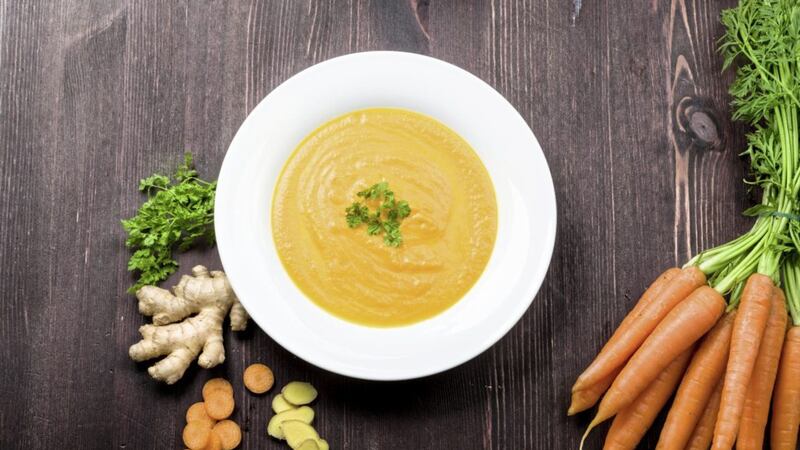WE KNOW it keeps us regular and helps to prevent constipation, but apart from the effects on bowel health, did you know that getting sufficient fibre in our diet is associated with a lower risk of heart disease, stroke, type 2 diabetes, weight management and bowel cancer.
We should be aiming for 30g fibre a day, but most of us fall far short of this recommendation. It seems that just 9 per cent of the population are reaching their daily fibre target. On average, men eat 21g a day and women eat just 17g fibre daily.
So, what does 30g fibre look like in a day? Here is an example of a day's meal plan that exceeds the fibre target.
For breakfast: A 40g bowl of porridge with a grated apple and a heaped dessertspoonful of flaxseed provides about 13g fibre
Lunchtime: A bowl of vegetable and lentil soup with wheaten bread and cheese has a whopping 17g fibre, thanks to the lentils.
Dinner: A tomato-based curry packed with vegetables and served with a portion of wholegrain rice provides about 12g fibre.
This is just an example – of course, amounts will vary depending on portion size and what ingredients we use. You can find out how much fibre in is your food by keeping an eye on food labels.
Adding pulses, vegetables and wholegrains to our diet makes all the difference to our daily fibre intake. With the advantage of filling us up, we are more likely to leave the table feeling satisfied, with less of an urge to snack on junk.
Tips to increase your fibre intake
It is best to eat a wide variety of plant-based foods to help us achieve the target of 30g fibre a day. Foods that are rich in fibre include fruit and vegetables, pulses, wholegrains, nuts and seeds. Here are a few simple ideas to help boost your intake:
:: Porridge is a good way to start the day. Choose jumbo oats and sprinkle a spoonful of seeds like chia or flaxseed on top for an extra boost.
:: Get your five a day, every day. Eat a couple of portions of fruit and at least three portions of vegetables every day.
:: Switch from white to wholemeal. Wholemeal pasta, brown rice, wholegrain bread all contain fibre that is lacking in the refined, white versions.
:: Eat your spuds with the skins on.
:: Keep a few cans of pulses in your larder. Chickpeas, red kidney beans, cannellini beans, borlotti beans and all the rest are a great standby to add into soups, curry, chill or use as a base for salads.
:: Give your snacks a fibre boost. A piece of fruit with a handful of nuts, some houmous with raw carrots, or oatcakes and nut butter all make satisfying snacks that are packed with fibre.
:: Try my carrot and ginger soup with added lentils to give yourself a fibre boost.
CARROT AND GINGER SOUP
(serves 4)
1 dsp coconut oil
1 large onion, chopped
6 medium carrots, chopped
75g red lentils
Pinch of dried chilli flakes
1 litre vegetable or chicken stock
1 inch root ginger, peeled and grated (about 1tsp)
Juice and zest of 1?2 orange
Method:
Heat the oil in a heavy-based pan. Add the onion and cook until translucent. Add the carrots, lentils, chilli flakes and stock. Simmer for 15 minutes, until the lentils are cooked. Remove from the heat. Grate in the root ginger and add the orange juice and zest. Blitz in your blender until smooth.








